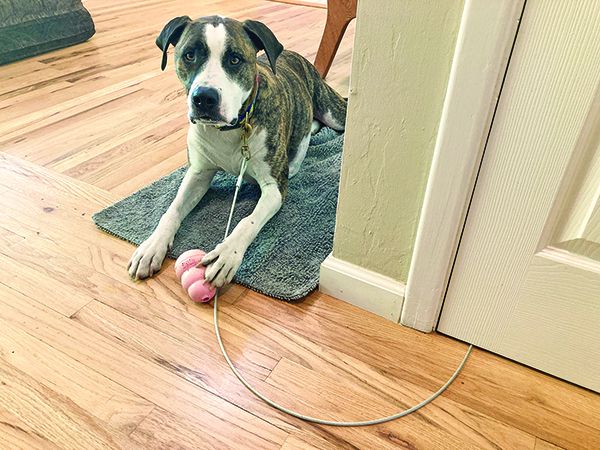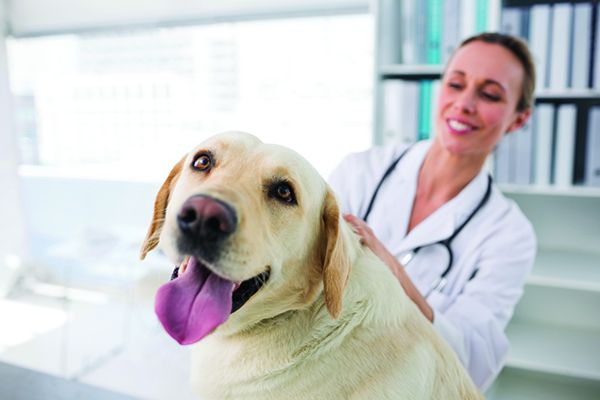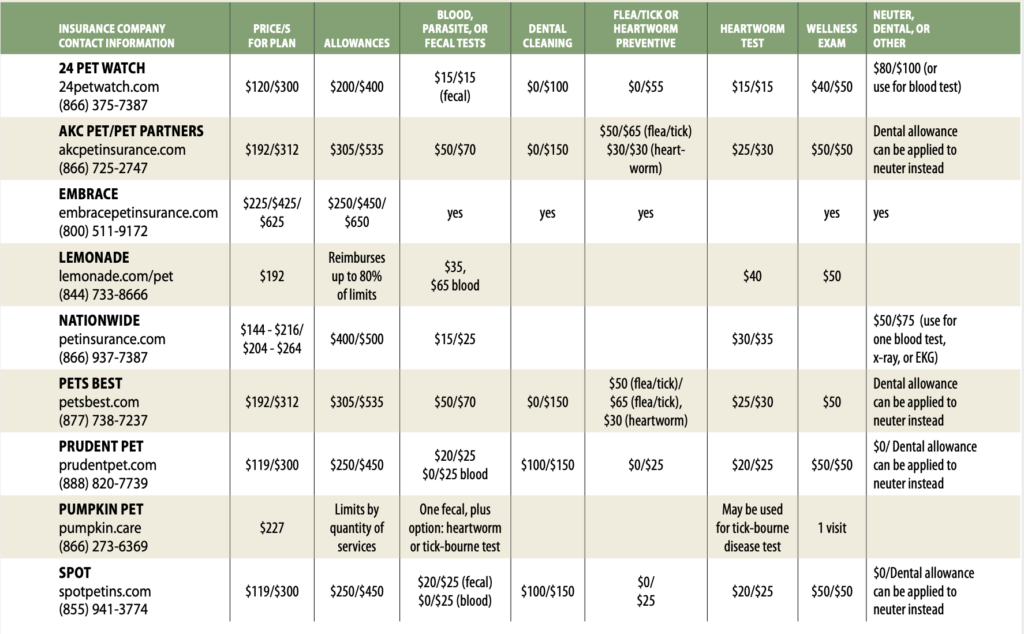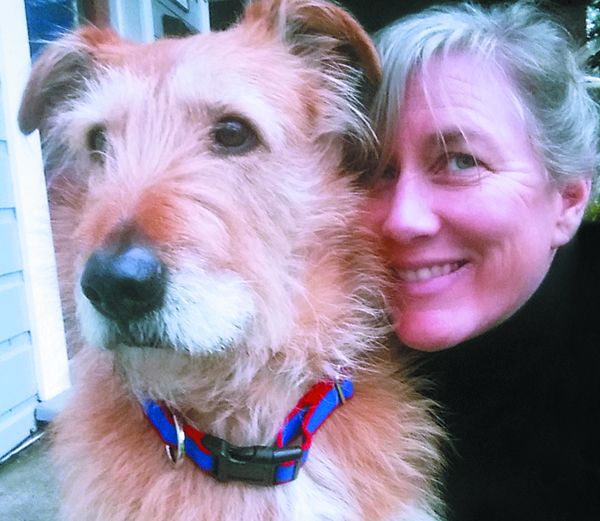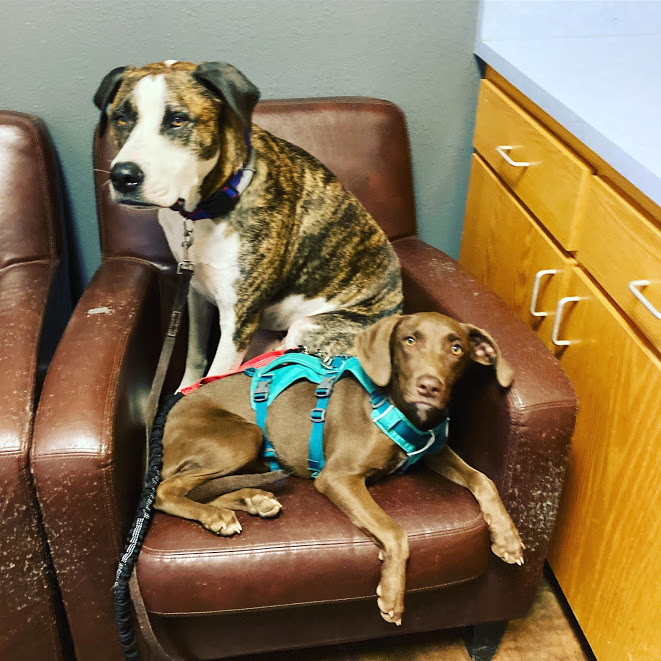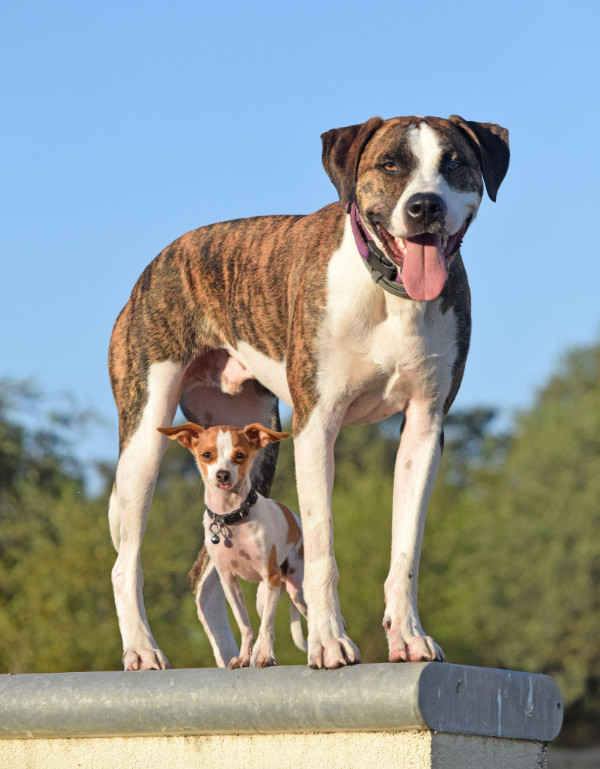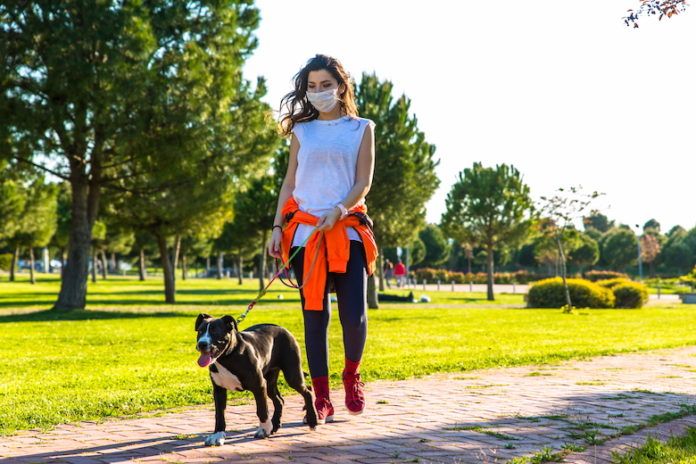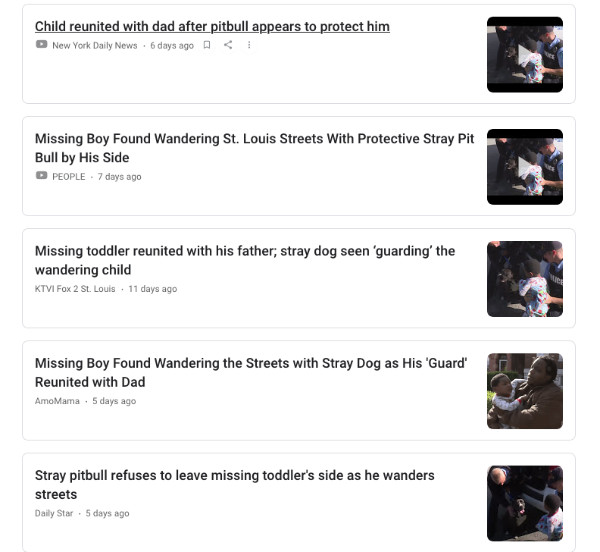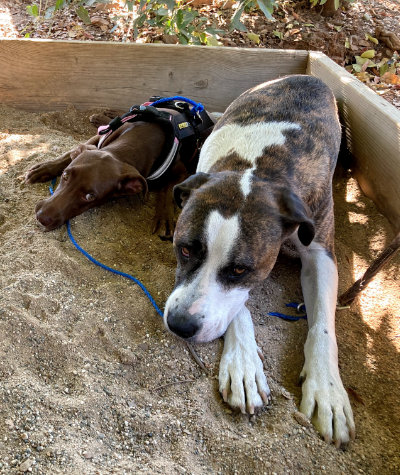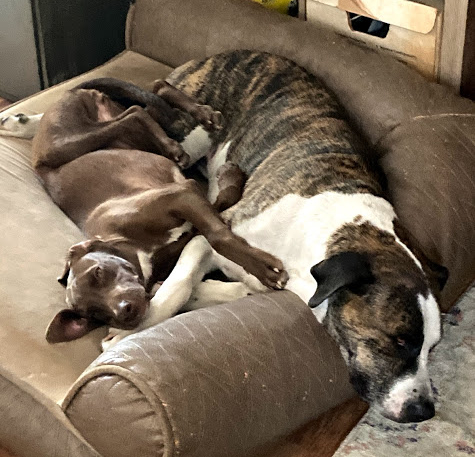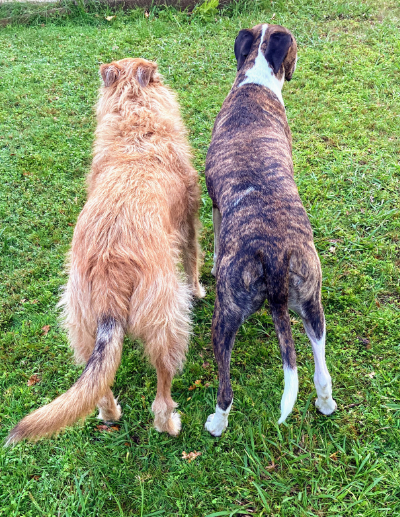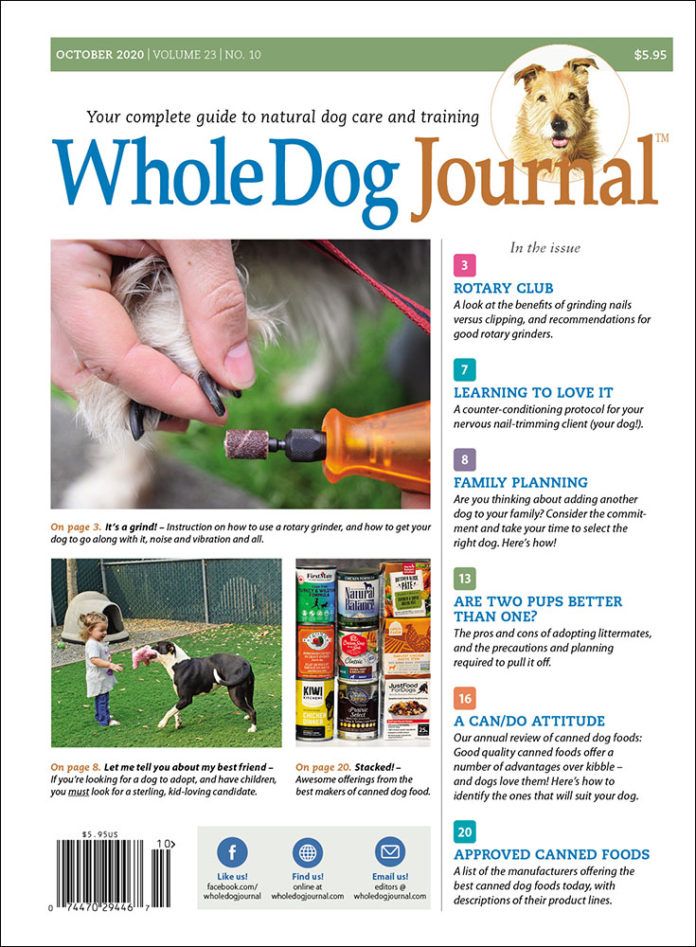I’ve long been a proponent of the appropriate, judicious use of tethers for dog training and management. This doesn’t mean tying up your dog in the yard all day while you’re at work, or for hours while you’re grocery shopping; it means short-term restraint under the direct supervision of a responsible human. Proper use of tethers can be a lifesaver in your dog’s training and management program.
You can purchase ready-made tethers (my favorites are from pettethers.com) or make them yourself out of sturdy, good-quality materials. While some people just tether with their dog’s leash, I don’t recommend this (except for short-term emergency tethering), as your dog can chew through a leash. A nylon-coated cable tether with sturdy clips on both ends can be attached to an eye-bolt screwed into a solid wall beam.
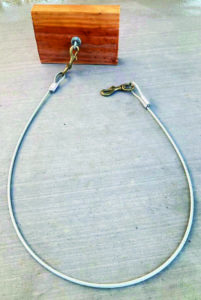
Alternatively, if you clip the tether to an eye-bolt screwed into a block of wood, you can then slide the tether under a door and close it; the door will hold the tether in place (as seen in the photo above).
You can also use the Pet n’ Place anchoring system to set up a portable tether outdoors and/or when you are traveling. This product is suggested for dogs who are less than 60 pounds; if your dog weighs more, use two!
APPLICATIONS
There are a multitude of ways a tether can enhance your life with your dog, including:
* Housetraining. Reduce your not-yet-housetrained dog’s crate confinement by tethering instead of crating. It’s easy keep him with you as you move around the house, and he will still be inhibited from soiling his immediate tether space.
* Chewing. Rather than crating to supervise his puppy/adolescent predilection to chew everything he can get his teeth on, tether in chew-proofed locations so he can still accompany you around the house.
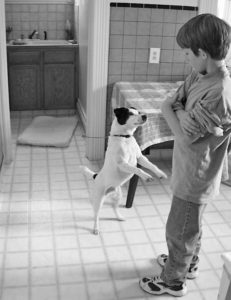
* Polite greeting. Tether your dog while you repeatedly approach to teach him to sit politely to greet people. You can also tether him while you greet visitors to your home, and then instruct your guests on how to greet him in order to reinforce polite greetings. For example, “When all four of the dog’s feet are on the floor, you can pet him. But if he jumps up, just step back out of range.”
* Present yet managed. Your dog may be social – perhaps too social. If he’s inclined to sit in everyone’s lap and not all your guests appreciate close encounters of the canine kind, you can tether him, rather than shut him away in a back room. He still gets to enjoy the company but can’t pester people. Again, coach your visitors that if they want to approach him, he needs to offer a polite sit in order to be greeted.
* Counter-surfing. In the kitchen, this is a must-do while you work to modify his counter-surfing behavior! (See “Useful Matters/Mat Training Tips,” WDJ January 2020 and “Counter Productive,” July 2020.)
*Training. Use a tether when you need your dog to stay in one place during a training or behavior modification session, but his stay is not yet solid, for example, while playing “Nose Games,” etc. (see “Everyone Nose That/Understanding Your Dog’s Nose,” September 2019).
* Other animal companions. If your dog is an attention hog, and every time your other dog comes up for some petting, he pushes her away and demands that you pet him instead, use his tether to ensure that she gets equal petting time. If your dog chases the cat out of the living room every time she tries to come in for a lap-visit, tether him and do counter-conditioning for the presence of the cat while also giving your feline family member some safe living room time.
* Restricted activity. If your dog is on the dreaded “restricted activity,” and if he will stay calm on a tether, tethering can be an alternative to crating.
* Feeding. Perhaps one of your dogs tends to gobble his food so he can go scavenge your other dogs’ bowls before they are done. You can tether your gobbler at his feeding station so you don’t have to constantly play traffic cop.
* Human mealtime. If your dog has learned the fine art of begging at the table, you can enhance your own dining experience by tethering him nearby, far enough away to prevent him from bugging you. He gets to be part of the family at mealtime but learns to mind his manners.
The tether can be a great tool when used properly and can be instrumental in helping your dog stay in your lifelong loving home rather than be rehomed, or even euthanized. Value it, and use it with care.
The tether isn’t for every dog, nor every restraint situation. Here are some things to keep in mind if you use a tether with your dog:
Do these things when tethering:
✓ Take the time to introduce your dog to his tether gradually, with treats, so he has a positive association with it. This is especially important if he is sound-sensitive, as the tether clips can make a clanking noise, or if he has prior negative experiences with being chained or tethered.
✓ If your dog has any tendency to pull hard/yank on his tether, attach the tether to the back clip of a harness to avoid potential damage to his neck.
✓ Instruct your guests on how to greet your dog properly when he’s tethered, and provide them with treats so they can reinforce him properly when he sits.
✓ Provide constant supervision for your tethered dog so he can’t become tangled and injure himself.
✓ Provide your dog with a food-stuffed toy or other chewie when appropriate (i.e., if you are tethering during your meals) to help him settle and relax on his tether. (You can tether a stuffed Kong to his tether attachment so it doesn’t roll out of his reach.)
Don’t do these things when tethering:
✓ Don’t use a tether if your dog is even mildly frightened or wary of it, unless you do ample conditioning first to convince him that it is wonderful.
✓ Don’t use the tether as punishment. It’s okay to use it as a calming time-out, but it should not be associated with any reprimands or coercive handling.
✓ Don’t leave your dog tethered and unattended. He can become tangled and injure himself.
✓ Don’t tether your dog where he can be harassed by other dogs or humans.
✓ Don’t tether your dog with a flat collar if he tends to pull hard on his tether, and never tether your dog on a choke chain or other collar that tightens. (They are called “choke chains” for a reason!)
✓ Don’t tether your timid dog where unfamiliar humans can approach him. If he must be tethered when humans are present, tether him at a distance where he can feel safer and you can still keep an eye on him, and surround him with exercise pens so no one can approach past his threshold distance. If he’s significantly fearful, do not tether him, ever, where unfamiliar humans might approach. Instead, put him in a safe room away from the action, inaccessible to visitors.


